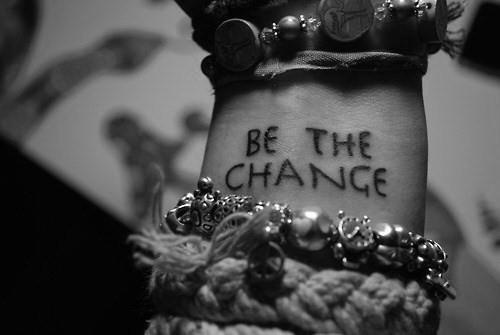Guided Divergence
 We’ve been sufficiently polluted by lean and Six Sigma, and it’s time for them to go.
We’ve been sufficiently polluted by lean and Six Sigma, and it’s time for them to go.
Masquerading as maximizers, these minimizers-in-sheep’s-clothing have done deep harm. Though Six Sigma is almost dead (it’s been irrelevant for some time now), it has made a lasting mark. Billed as a profit maximizer, it categorically rejects maximization. In truth, it’s a variation minimizer and difference reducer. If it deviates, Six Sigma cuts its head off. Certainly this has a place in process control, but not in thinking control. But that’s exactly what’s happened. Six Sigma minimization has slithered off the manufacturing floor and created a culture of convergence. If your thinking is different, Six Sigma will clip it for you.
Lean is worse. All the buzz around lean is about maximizing throughput, but it doesn’t do that. It minimizes waste. But far worse is lean’s standard work. Minimize the difference among peoples’ work; make them do it the same; make the factory the same, regardless of the continent. All good on the factory floor, but lean’s minimization mania has spread like the plague and created a culture of convergence in its wake. And that’s the problem – lean’s minimization-standardization mantra has created a culture of convergence. If your thinking doesn’t fit in, lean will stomp it into place.
We need maximization at the expense of minimization, and divergence before convergence. We need creativity and innovation. But with Six Sigmaphiles and lean zealots running the show, maximization is little understood and divergence is a swear.
First we must educate on maximization. Maximization creates something that had not existed, while minimization reduces what is. Where Six Sigma minimization converges on the known right answer, creativity and innovation diverge to define a new question. The acid test: if you’re improving something you’re minimizing; if you’re inventing something you’re maximizing.
Like with He Who Shall Not Be Named, it’s not safe to say “diverge” out loud, because if you do, the lean Dementors will be called to suck out your soul. But, don’t despair – the talisman of guided divergence can save you.
With guided divergence, a team is given a creatively constructed set of constraints and very little time (hours) to come up with divergent ideas. The constraints guide the creativity (on target), and the tight timeline limits the risk – a small resource commitment. (Though counterintuitive, the tight timeline also creates remarkable innovation productivity.) Done in sets, several guided divergence sessions can cover a lot of ground in little time.
And the focused/constrained nature of guided divergence appeals to our minimization bias, and makes it okay to try a little divergence. We feel safe because we’re deviating only a little and only for a short time.
Lean and Six Sigma have served us well, and they still have their place. (Except for Six Sigma.) But they must be barred from creativity sessions and front end innovation, because here, divergence carries the day.
Do You Care Enough To Be Lonely?
 If you don’t feel lonely, you’ve succumbed to group-think. No, it’s worse – you’ve stopped thinking altogether. If you don’t feel lonely you’re doing it wrong.
If you don’t feel lonely, you’ve succumbed to group-think. No, it’s worse – you’ve stopped thinking altogether. If you don’t feel lonely you’re doing it wrong.
Mainstream follows mainstream – they don’t know why, they just do. In truth, mainstream likes to be lead by the nose because it’s easy, because they can get through the week without caring. But not caring is not right.
But when you care, when you really care, when you care so much it hurts, you’ve got it right. Loneliness hurts because you see habitual mistakes on the horizon; it hurts because you see bureaucracy trump thinking; it hurts because you see hierarchy squelch creativity. Put simply – it hurts because you care enough to look and you’re smart enough to see.
But take comfort in your loneliness. Though sometimes it feels they want to poke your eyes out, deep down companies want you to see. Sure, they’re afraid of the ruckus, but they want you to wrestle with the familiar. Yes, they won’t sanction your detectiveness, but they want you to investigate the crime scene. Absolutely – though with plausible deniability – they want your inner Nostradamus to conger the future.
Every-day-all-day loneliness is too much, but a low dose is good. 100% loneliness festers into anger, but now-and-again loneliness is healthy.
Take stock in your loneliness – it’s a sign your brain is turned on. And it’s a sign you care.
Engineering Incantations
 Know what’s new in the new design. To do that, ask for a reuse analysis and divvy up newness into three buckets – new to your company, new to your industry, new to world. If the buckets are too big, jettison some newness, and if there’s something in the new-to-world bucket, be careful.
Know what’s new in the new design. To do that, ask for a reuse analysis and divvy up newness into three buckets – new to your company, new to your industry, new to world. If the buckets are too big, jettison some newness, and if there’s something in the new-to-world bucket, be careful.
Create test protocols (how you’ll test) and minimum acceptance criteria (specification limits) before doing design work. It’s a great way to create clarity.
Build first – build the crudest possible prototype to expose the unfamiliar, and use the learning to shape the next prototypes and to focus analyses. Do this until you run out of time.
Cost and function are joined at the hip, so measure engineering on both.
Have a healthy dissatisfaction for success. Recognize success, yes, but also recognize it’s fleeting. Someone will obsolete your success, and it should be you.
To get an engineering team to believe in themselves, you must believe in them. To believe in them, you must believe in yourself.
Forgotten Pillars of Personal Growth
 There are a lot of complex self-help programs out there to help us reach our potential. These programs are designed to take us to the next level by building on what we have. And they do help. But implicitly the programs assume we’ve got a foundation in place and it’s solid enough to stand on. But I think our foundation is rickety.
There are a lot of complex self-help programs out there to help us reach our potential. These programs are designed to take us to the next level by building on what we have. And they do help. But implicitly the programs assume we’ve got a foundation in place and it’s solid enough to stand on. But I think our foundation is rickety.
To be what we must be is our responsibility, and if we’re going to get any value from our self-help programs it’s our responsibility to establish the conditions for growth.
Here are three forgotten pillars that must be in place if we’re to grow:
Good sleep habits – most of us our sleep deprived, yet the data is clear that a rested brain thinks better. If we’re to grow, we’ve got to think better, and to think better we need more rest.
Good eating habits – most of us eat poorly. We eat too much which hurts our bodies and we eat too infrequently which hurts our brains. We all know our muscles need calories or they don’t work well, but what we forget is our brain also needs calories. (It’s 2% of our weight but consumes about 20% of our total calories.) And when we eat infrequently our blood sugar drops and so does our brains’ ability to think. If we’re to grow, we need to eat better.
Good fitness habits – most of us don’t exercise daily. Our brain is connected to our body, and they interact. When the muscles are exercised they cause the brain to make chemicals that sooth and calm. When we exercise we have a better attitude, have more stamina, and think better. If we’re to grow, we need more exercise.
The big three are far more powerful than the best self-help scheme, but they’re also far scarier. They’re so scary because they’re easy to measure and completely within our control.
After a one month trial you’ll know if you’ve slept more, worked out more, and ate better. And if you haven’t, you’ll also know who is responsible.
Lasting Behavioral Change
 Whether it’s innovation, creativity, continuous improvement, or discontinuous improvement, it’s all about cultural change, and cultural change is about change in behavior.
Whether it’s innovation, creativity, continuous improvement, or discontinuous improvement, it’s all about cultural change, and cultural change is about change in behavior.
With the police state approach, detailed processes are created and enforced; rules are created and monitored; and training is dealt out and attendance taken. Yes, behavior is changed, but it’s fleeting. Take your eye off the process, old behavior slips through the fence; look the other way from the rules, old behavior clips the barbed wire and climbs over the wall. To squelch old behavior with the police state approach, gulag energy must be consistently applied.
To squelch is one thing, but to create lasting behavior change is another altogether. But as different as they are, there’s a blurry line of justice that flips innocent to guilty. And to walk the line you’ve got to know where it is:
- Apply force, yes, but only enough to prevent backsliding – like a human ratchet. Push much harder and heels dig in.
- The only thing slower than going slow is going too fast. (Remember, you’re asking people to change the why of their behavior.) Go slow to go fast.
- Set direction and stay the course, unless there’s good reason to change. And when the team comes to you with a reason, deem it a good one, and the cornerstone of trust is laid. (This is a game of trust, not control.)
But there are some mantras to maximize:
- Over emphasize the positive and overlook the negative.
- Praise in public.
- Don’t talk, do.
The first two stand on their own, but the third deserves reinforcement.
This isn’t about your words, it’s about your behavior. And that’s good because you have full authority over your behavior. Demonstrate the new behavior so everyone knows what it looks like. Lead the way with your actions. Show them how it’s done. For lasting change, change your behavior.
Even if changing your behavior influences only one person, you’re on your way. The best prison riots start with a single punch.
Prototype the Unfamiliar
 Today’s answer to everything is process and tools. Define the desired outcome; create the process; create the tools. Problem solved.
Today’s answer to everything is process and tools. Define the desired outcome; create the process; create the tools. Problem solved.
But if the desired outcome is lasting change, deterministic processes and static tools won’t get us there. Lasting change comes from people and their behavior.
Going forward, instead of creating process, create an environment of trust so people will investigate the unfamiliar; and instead of creating tools, create time – time for people to prototype the unfamiliar.
Choose to Choose
 There will always be more work than time – no choice there. But, you can choose your mindset. You can choose to be overwhelmed; you can complain; and you can feel bad for yourself. You can also choose to invert it – you only work on vital projects because less important ones aren’t worth your time. Inverted, work is prioritized to make best use of your valuable time. When there’s too much work you can whine and complain, or you can value yourself – your choice
There will always be more work than time – no choice there. But, you can choose your mindset. You can choose to be overwhelmed; you can complain; and you can feel bad for yourself. You can also choose to invert it – you only work on vital projects because less important ones aren’t worth your time. Inverted, work is prioritized to make best use of your valuable time. When there’s too much work you can whine and complain, or you can value yourself – your choice
Most of us don’t choose what we work on, and sometimes it’s work we’ve done before. You can choose to look at as mind numbing tedium, or you can flip it. You can look at it as an opportunity to do your work a better way; to try a more effective approach; to invent something new. With repeat work you can dull it down or try to shine – your choice.
Sometimes we’re asked to do new and challenging work. You can choose to be afraid; you can make excuses; and you can call in sick for the next month. Or you can twist it to your advantage and see it as an opportunity to stretch. With challenging work you can stunt yourself or grow – your choice.
Negativity repels and positivity attracts – it’s time for you to choose.
Circle of Life
Engineers solve technical problems so
Other engineers can create products so
Companies can manufacture them so
They can sell them for a profit and
Use the wealth to pay workers so
Workers can support their families and pay taxes so
Their countries have wealth for good schools to
Grow the next generation of engineers to
Solve the next generation of technical problems so…
Why Tough Choices Are Tough
 This week my son made a difficult choice – he chose between two things he loves.
This week my son made a difficult choice – he chose between two things he loves.
The easy choice was to say yes to both, but in reality, there was not enough time. And in reality, the easy yes was a masquerade. It was really a slow, painful no with rippling consequences to his future. The tough choice did not come immediately and it did not come easy. But in the end, he was ready to make it because he saw things not as he wanted them to be, but as they were.
Once he decided he was going to choose, he had to decide which to choose. A tough choice made tougher because one is mainstream and the other on the fringe. It was clear there were far more overt repercussions with a no to the mainstream. Simply put, the powerful mainstream would not understand. But to his credit, he recognized the mainstream cares about itself, not him. Also, it was clear the fringe accepts him for him. So he sat himself in the future, figured out what was best for the soon-to-be him, and chose the fringe.
Once he decided which to chose, he had to decide how to choose. The easy choice was to slink quietly into the fringe never to be seen again. This was another masquerade. It was really an opportunity to self-devalue his decision and a setup for never ending ridicule over the remainder of his high school career. Instead, he made the tough choice to speak truth to the mainstream authority – face-to-face.
He got up early and met the coach in his office. The gist of the meeting – I’m sad, but this is my choice and why I’m choosing.
To the coach’s great credit, though disappointed, he understood and thanked Ethan for meeting face-to-face. And though emotionally wobbly after the meeting, because he declared his choice and was validated, he stood taller. And once validated by the head of the mainstream, there was no room for ridicule.
This week my son showed me what courage is. And he taught me an important lesson – tough decisions are tough, but we’re better off for making them.
I’m proud of him.
A Race for Learning – Video Training with TED-Ed
 I’ve been thinking about how to use video to train engineers. The trouble with video is it takes time and money to create. But what if you could create lessons using existing video? That’s what the new TED-Ed platform can do. With TED-Ed, any YouTube video can be “flipped” into a customized lesson.
I’ve been thinking about how to use video to train engineers. The trouble with video is it takes time and money to create. But what if you could create lessons using existing video? That’s what the new TED-Ed platform can do. With TED-Ed, any YouTube video can be “flipped” into a customized lesson.
Instead of trying to describe it, I used the new platform to create a video lesson. Click the link below and give it a try. (The platform is still in beta version, so I’m not sure how will go. But that’s how it is with experiments.)
Video lesson: Innovation, Caveman-Style
When answering the questions, it may ask you to sign up for an account. Click the X in the upper right of the message to make it go away, and keep going. If the video does not work at all, poke around the TED-Ed website.
Either way, so we can accelerate our learning and get out in front, please post a comment or two.
Celebrating Three Years of Shipulski On Design
 Today is a celebration – three years of Shipulski On Design!
Today is a celebration – three years of Shipulski On Design!
I get lot’s of great feeback, but the best is when you tell me my writing touched you and helped you do your work differently. You may see this as my gift to you, but I see it as your gift to me.
Thank you for reading and commenting.
Below are some highlights for 2012:
Accomplishments in 2012
- Third year of weekly blog posts without missing a beat or repeating (203 posts in total).
- Second year of daily tweets – 1520 in all (@mikeshipulski).
- Top 40 Innovation Bloggers – Innovation Excellence, the web’s top innovation site.
- Sixth consecutive year as Keynote Speaker at International Forum on DFMA.
- Started Pinterest page – cool engineering pictures and video content – (ShipOnDesign).
- Third year of LinkedIn working group – Systematic DFMA Deployment.
- Second year writing a column for Assembly Magazine (6 columns this year).
Top 5 Posts
- Why it’s tough to decide — how to spot unmade decisions – gremlin style.
- Choose your path — the three paths explained – short and good.
- Impossible — well, almost.
- What is Design for Manufacturing and Assembly — the basics – video style.
- When It’s Time For a New Cowpath — great photo
I look forward to a great year 4.

 Mike Shipulski
Mike Shipulski